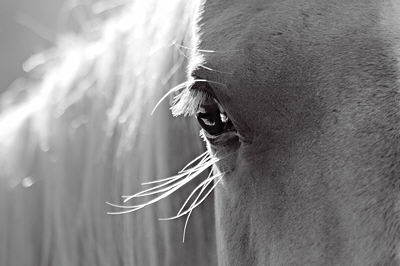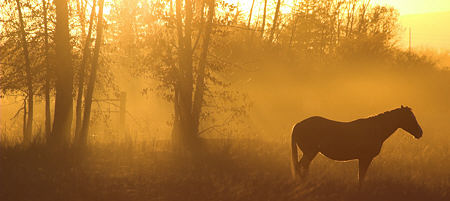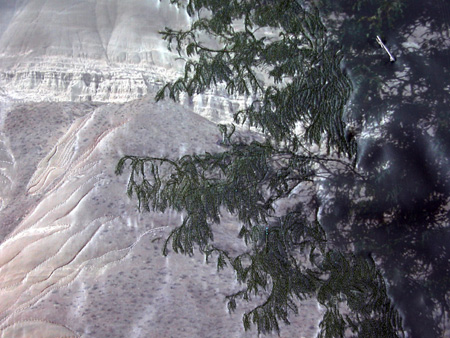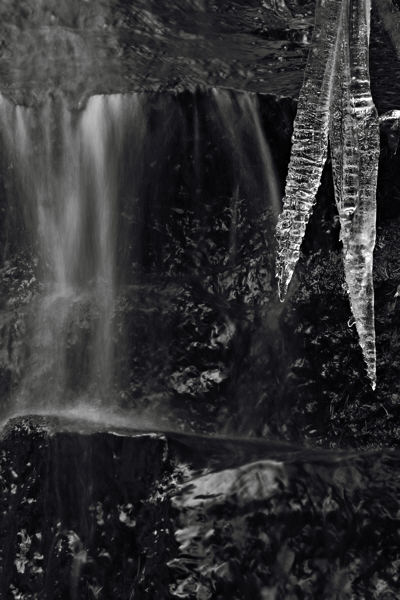Posted by Steve Durbin on October 29th, 2007
Sometimes, when you get hammered with something from all sides, it begins to sink in. Last week Susan Galassi (Curator at the Frick and Picasso scholar) discussed, among other things, Picasso’s concern with time, which was a new one for me. A few days later, while chatting with artist Glenn Bodish about his work, he told me that a major theme throughout his career has been time and the way it structures our experience through change and the opening and closing of possibilities (at least that’s how I read it; there was a lot of interesting stuff in there about quantum mechanics and chaos and four dimensions and Eastern philosophy). Then, the next time I had a camera in my hands, I was at a small waterfall seeing nothing of particular note — until I had the thought that a photograph there could be about time.
more… »
Posted by Steve Durbin on October 20th, 2007
From The art of looking sideways, by Alan Fletcher.
I shut my eyes in order to see. – Paul Gauguin
It is only with the heart that one can see rightly. What is essential is invisible to the eye. – Antoine de Saint-Exupery
I paint what I know, not what I see. – Pablo Picasso
What you see is what you see. – Frank Stella
Seeing is not believing. Believing is seeing. – Robert Pirsig

Posted by June Underwood on October 12th, 2007
I’m a pushover for powerful art. Are you?

Daniel Chester French. The Lincoln Memorial
And by “powerful” I often mean Big. Big in size, Big in ideas, Big in meaning, Big in its very conception.
more… »
Posted by Steve Durbin on October 9th, 2007

In a recent post, Hanneke looked again at a year-old painting she had felt dissatisfied with. I’m not sure how common this is for painters, but for me and, I suspect, most photographers, it’s the normal way of things. Whether blessing or curse, we have lots of older images that were not immediately pursued. Capturing an image takes much less time than bringing it to the standard of a fine print.
There is one advantage to this state of affairs, namely the enforced editing that prunes the large fraction of images that are, at best, less good than those we spend our limited time on. There might even be psychological benefit: if it’s good to learn to let go, I sure have a lot of learning opportunities. On the other hand, if regret is bad, I’m in trouble.
more… »
Posted by Steve Durbin on October 2nd, 2007

A blog like Art & Perception is, in some ways, a substitute for the local café. The ability to discuss art with people around the world compensates, at least in part, for the loss of the immediacy of face-to-face contact. But it’s not a complete substitute. Direct interaction is still important for many reasons, and consequently there is a need for ways to facilitate it by letting people know about opportunities to meet each other, to learn, and to see art.
Few of us are so plugged in to our local art scene that we are aware of everything that’s going on in terms of shows, openings, talks, social events, etc. The newspaper may list major events, typically those for which an ardent volunteer or a motivated gallery has written a press release. In the case of my hometown of Bozeman, Montana, there are several places on the web that have listings, but judging from what is there, I suspect they are little known or used. Most of what is happening is invisible to the public. Sometimes that’s desired, though certainly not always.
But more important than the events themselves is the community that could potentially form around them. The past quickly slips into oblivion, and there is no convenient forum for the remembering, discussing, reviewing, proposing that might be engendered.
more… »
Posted by Rex Crockett on September 29th, 2007
I haven’t read Stephen King in a while, but I recently picked off a random shelf the last of his Dark Tower series — The Song of Susannah. I was intrigued enough to start reading. King has in the past written many nice essays on the subject of writing. The introduction to this book is no exception.
What caught my eye and what I’m relaying here is germane to all the arts, so I thought I’d bring it in.
From “On Being Nineteen (And A Few Other Things)”
I think novelists come in two types, and that includes the sort of fledgling novelist I was by 1970. Those who are bound for the more literary or ‘serious’ side of the job examine every possible subject in the light of this question: What would writing this story mean to me? Those whose destiny … is to include the writing of popular novels are apt to ask a very different one: What would this story mean to others? The ‘serious’ novelist is looking for answers and keys to the self; the ‘popular’ novelist is looking for an audience.
It is no stretch to extend this to other arts. I know what kind of artist I am. Which kind are you?
Posted by June Underwood on September 28th, 2007
As an oil painter who tends toward “moosh” rather than clean graphic edges, I have found myself pondering the stitched line intrinsic to my quilted paintings. They change the moosh that I so often fall into, adding a different set of visual ideas.
So, if you’ll forgive me, I want to explore notions of line — line mostly as it is generally described and discussed in design classes, but more particularly as it works in quilted art. [ed. note: This turned out to be more of an essay than I had intended. If you wish, you can just look at the pretty pictures.]

Painted Hills Bluff, detail (Work in Progress)
Line is important in design, particularly, of course, in drawing. It moves the eye, evokes feelings, defines or suggests shape, can make value and depth, and can be varied to vary its expressive quality. In quilted art, line functions in all these ways, but can have a weight and value different from that found in drawing and is far more inportant than line is in painting. In conventional photography, line seems to have minor function, but art photography often makes extensive use of line.
more… »





